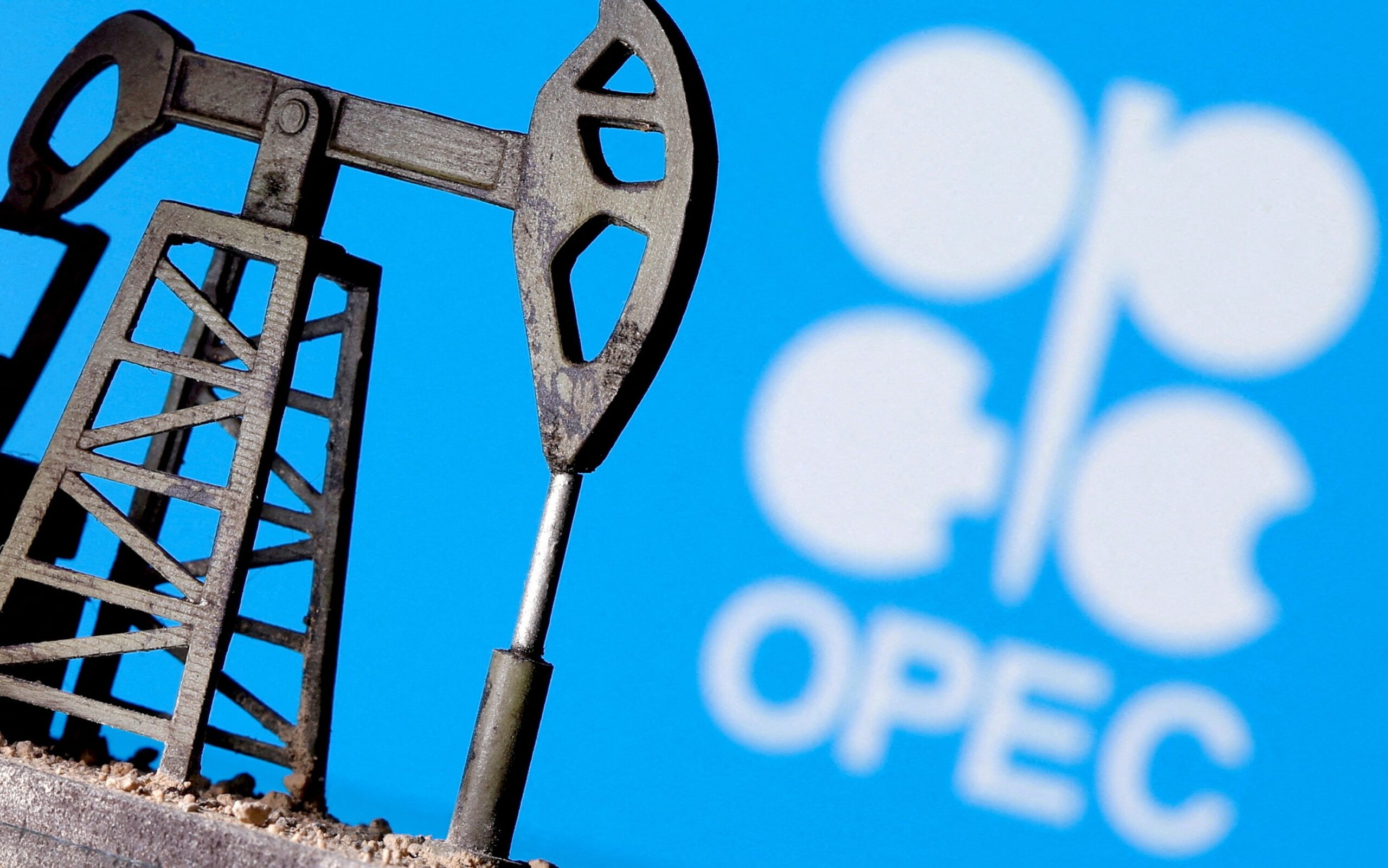Oil prices remain relatively stable amid uncertainty surrounding OPEC+ supply cuts and concerns over global demand.
Oil prices remained steady on Friday as the market grappled with mixed signals regarding supply from Russia and Saudi Arabia ahead of the upcoming OPEC+ policy meeting. Additionally, concerns about a stronger US dollar and fears of weaker-than-anticipated demand growth further contributed to the cautious sentiment in the market.
At 11:59 a.m. Saudi time, Brent crude increased by 40 cents, reaching $76.66 per barrel, while US West Texas Intermediate rose by 54 cents to $72.37 per barrel.
On Thursday, both benchmarks experienced a decline of over $2 per barrel following Russian Deputy Prime Minister Alexander Novak’s comments downplaying the likelihood of additional production cuts by OPEC+ at the upcoming meeting in Vienna on June 4.
Despite the recent downturn, both prices were still on track to record a second consecutive week of modest gains, slightly below 1 percent. The potential agreement to raise the US debt ceiling, which appears to be within reach, could potentially provide a boost to oil prices.
Russian President Vladimir Putin stated on Wednesday that energy prices were approaching levels that were “economically justified,” implying that there might be no immediate adjustments to the group’s production policy.
These statements contrasted with remarks made earlier this week by Saudi Energy Minister Prince Abdulaziz bin Salman, who cautioned short sellers to be cautious. Some investors interpreted this as a signal that OPEC+ might consider further output cuts.
Concerns over weaker-than-expected global demand growth also weighed on investor sentiment, despite expectations of a rebound in the second half of the year, particularly driven by increased demand from China.
Simultaneously, there has been an increase in bets on declining oil prices.
The US dollar has strengthened in recent weeks against major currencies, making dollar-denominated commodities, including oil, more expensive for holders of other currencies.
As the oil market continues to grapple with uncertainties surrounding supply and demand, investors and analysts are closely monitoring the developments that could shape the future of oil prices.
The conflicting messages from Russia and Saudi Arabia ahead of the OPEC+ meeting have added to the market’s cautious outlook. Russian Deputy Prime Minister Alexander Novak’s comments suggesting a reluctance to implement further production cuts have dampened expectations of supply tightening. In contrast, Saudi Energy Minister Prince Abdulaziz bin Salman’s warning to short sellers has raised speculations about the possibility of additional output reductions.
The market sentiment is further influenced by concerns over weaker-than-anticipated demand growth. While expectations of a demand rebound in the second half of the year exist, particularly driven by China, current worries about the global economic recovery have weighed on investor outlook. The ongoing impact of the COVID-19 pandemic and potential restrictions on travel and economic activities continue to cast a shadow of uncertainty over oil demand.
In addition to supply and demand factors, the strength of the US dollar has played a role in shaping oil prices. The recent strengthening of the dollar against major currencies has made oil, which is priced in dollars, more expensive for holders of other currencies. This dynamic has added pressure to oil prices, as it reduces the affordability of crude oil for buyers using different currencies.
Looking ahead, market participants will closely follow the outcomes of the upcoming OPEC+ meeting scheduled for June 4. The decisions made during the meeting regarding production levels and supply management will have a significant impact on oil prices in the coming months. Additionally, any developments in the global economic landscape, including progress in COVID-19 containment measures and stimulus measures by governments, will also be closely monitored for their potential impact on oil demand.
As the oil market continues to navigate these uncertainties, investors, traders, and industry experts remain vigilant, analyzing a multitude of factors that influence oil prices. The balancing act between supply and demand, geopolitical dynamics, economic indicators, and currency fluctuations will shape the trajectory of oil prices in the near term.
Overall, the oil market remains cautious as it navigates conflicting signals regarding supply, concerns about demand, and the impact of currency fluctuations. Market participants will closely monitor the outcomes of the upcoming OPEC+ meeting and global economic developments for further insights into the direction of oil prices.





